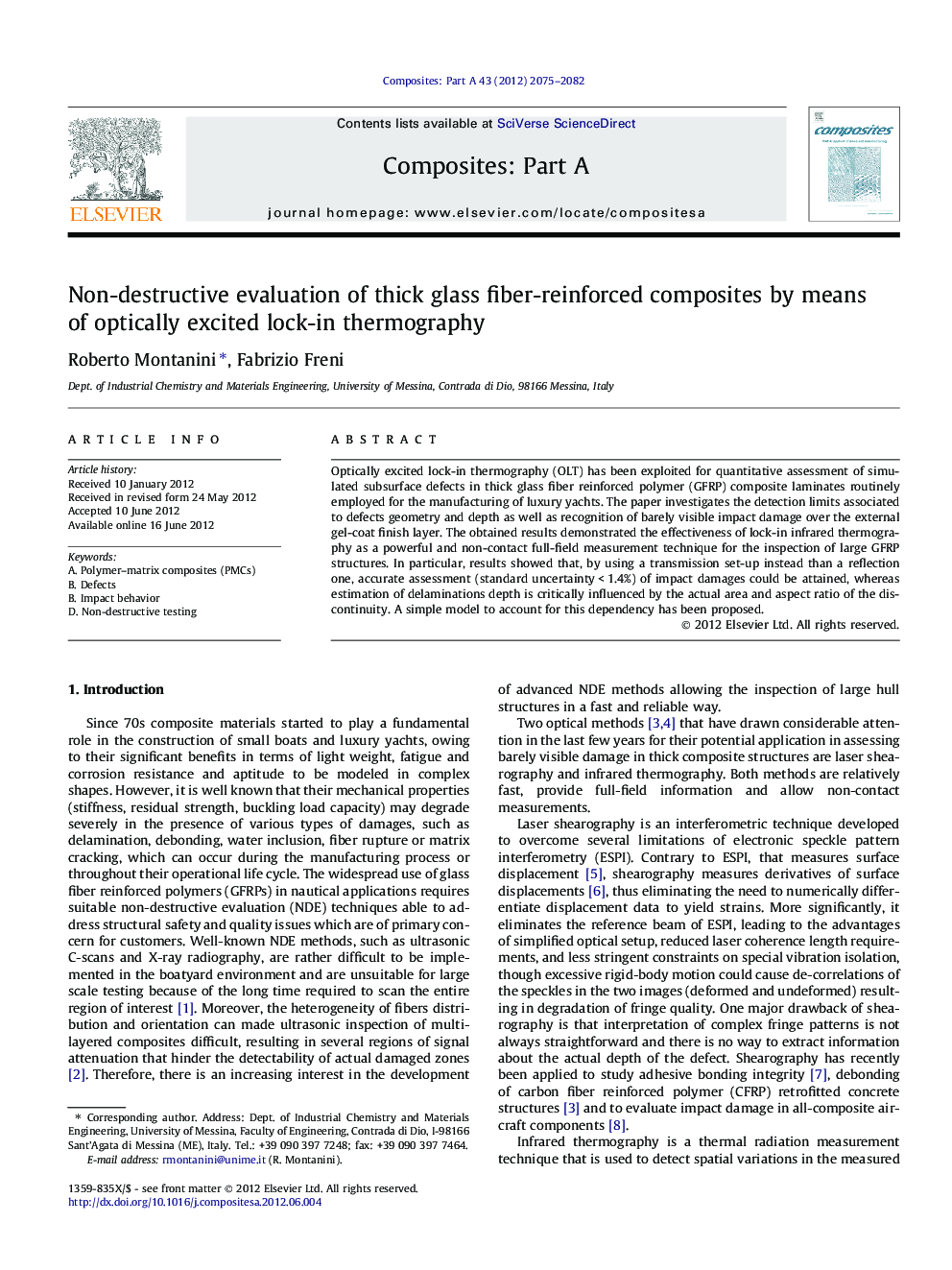| Article ID | Journal | Published Year | Pages | File Type |
|---|---|---|---|---|
| 10627632 | Composites Part A: Applied Science and Manufacturing | 2012 | 8 Pages |
Abstract
Optically excited lock-in thermography (OLT) has been exploited for quantitative assessment of simulated subsurface defects in thick glass fiber reinforced polymer (GFRP) composite laminates routinely employed for the manufacturing of luxury yachts. The paper investigates the detection limits associated to defects geometry and depth as well as recognition of barely visible impact damage over the external gel-coat finish layer. The obtained results demonstrated the effectiveness of lock-in infrared thermography as a powerful and non-contact full-field measurement technique for the inspection of large GFRP structures. In particular, results showed that, by using a transmission set-up instead than a reflection one, accurate assessment (standard uncertainty < 1.4%) of impact damages could be attained, whereas estimation of delaminations depth is critically influenced by the actual area and aspect ratio of the discontinuity. A simple model to account for this dependency has been proposed.
Related Topics
Physical Sciences and Engineering
Materials Science
Ceramics and Composites
Authors
Roberto Montanini, Fabrizio Freni,
